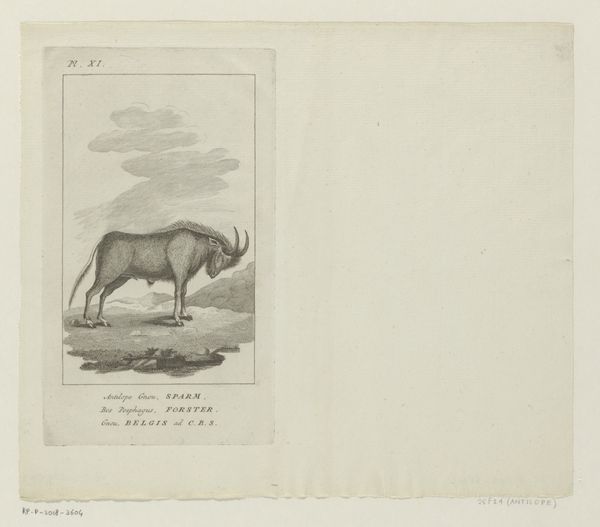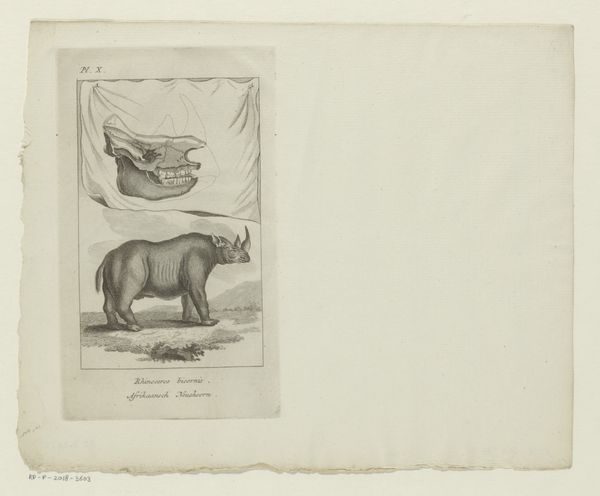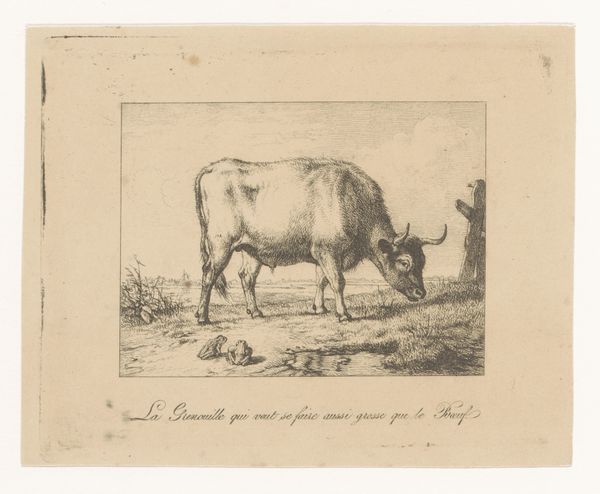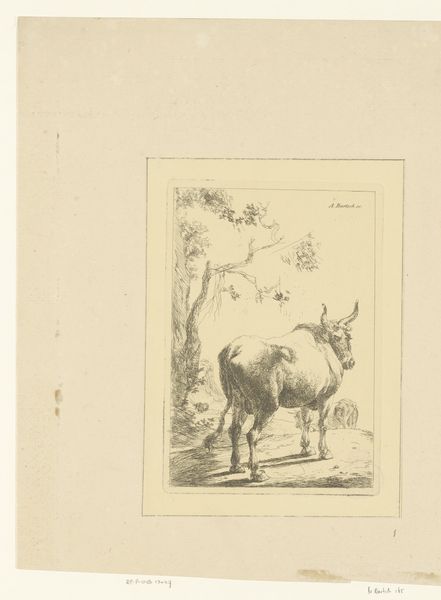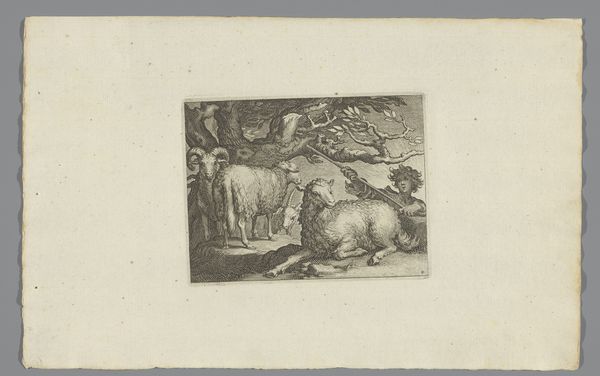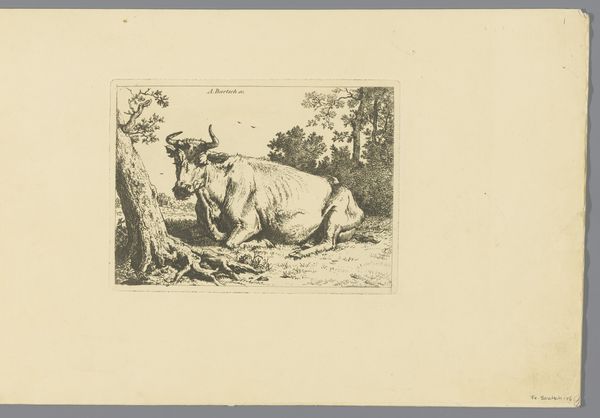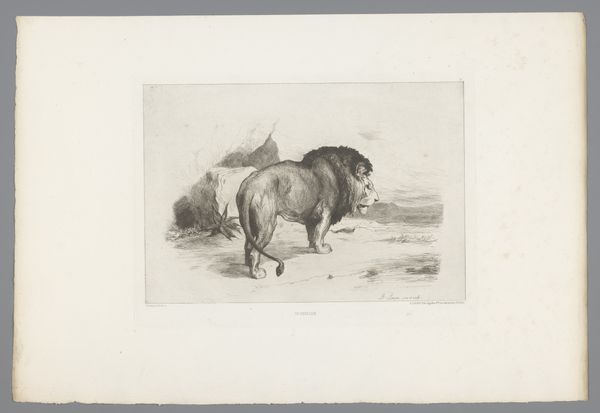
print, paper, engraving
# print
#
paper
#
engraving
Dimensions: height 205 mm, width 122 mm
Copyright: Rijks Museum: Open Domain
Editor: Here we have a print from 1787, titled "Jong van een nijlpaard aan de waterkant," or "Young Hippopotamus at the Waterside," showing what looks like an engraving of a baby hippo. There's something almost melancholic about it. How do you interpret this work? Curator: What strikes me immediately is how the hippo, typically seen as a creature of power, is here depicted as a juvenile, evoking vulnerability. Notice the sparse use of line, giving a sense of openness. How do you think this adds to the feeling you mentioned? Editor: I suppose the bareness makes it feel a bit lonely, disconnected from a larger environment. The shading suggests roundness of form. The hippo almost floats between land and the turbulent sky. It’s interesting how an animal we now see often in vibrant photographs is rendered here, almost like a ghost of its future self. Curator: Precisely! Animals often represent concepts larger than themselves, especially at this time when our scientific understanding of them was rapidly shifting. What memories or emotions does it bring to mind, beyond just the image of the hippo itself? Editor: Well, there’s something timeless about it. Maybe because it's so sparse. There's a stillness that makes you contemplate the weight of existence, even for something so young. Curator: Perhaps this image captures not just the likeness of an animal, but also something more fundamental. What visual vocabulary resonates and allows this idea of “existence” to prevail in an etching from the 1780's? Editor: Good question. Considering that vocabulary helps us to think about the human need to constantly reflect ourselves through other beings. Thanks.
Comments
No comments
Be the first to comment and join the conversation on the ultimate creative platform.

